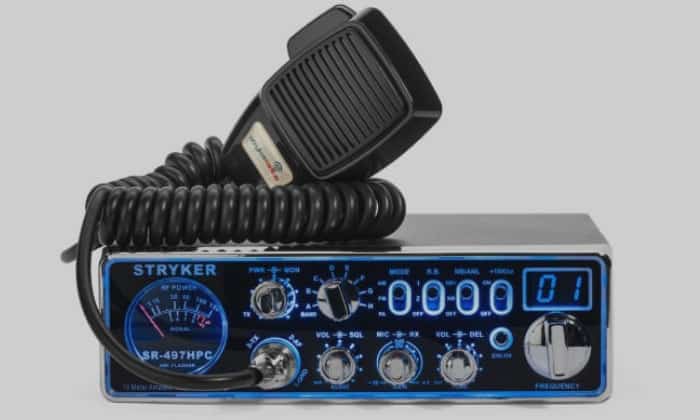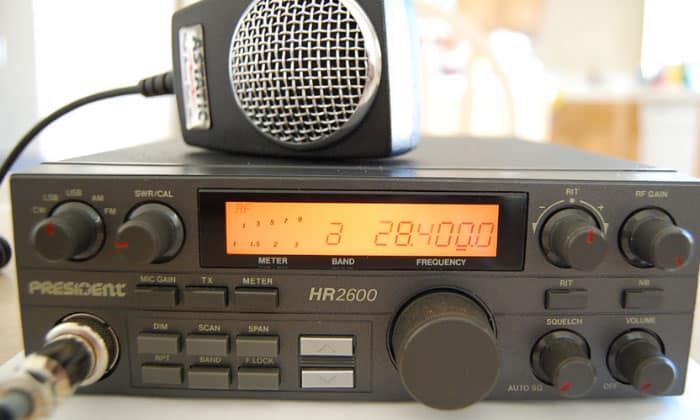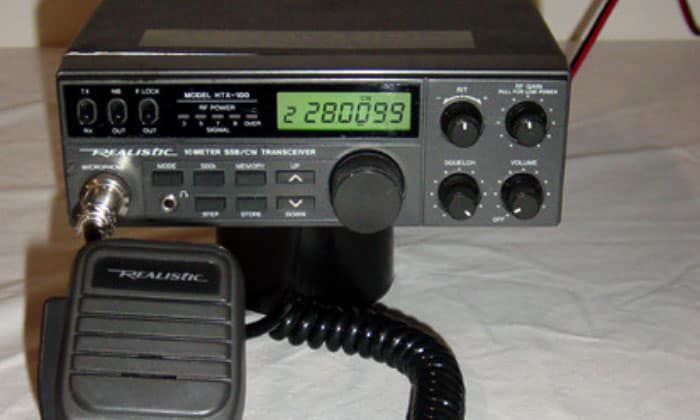
Have you encountered the question, “What is a 10-meter radio?” in your journey as a radio enthusiast? As its name suggests, this radio works in the 10-meter band allocated for amateur radio enthusiasts.
Users of this unit can broadcast on shortwave frequencies from 28 to 29.7 megahertz. Amateur operators love 10-meter radios because they can use them for long-distance communication – much so that they can talk to those in other countries.
Contents
Things to Know About 10-Meter Radios
First things first: as with other amateur radios, you need a license from the Federal Communications Commission (FCC) to operate a 10-meter radio. It is a popular companion among enthusiasts who always conduct two-way communication with those far away from them – even abroad.
The distance a 10-meter radio can cover depends on many factors: environment, antenna, wattage, and mode of transmission. For starters, if your base station has powerful antennas, expect a better radio range.
Couple it with a high-power unit, say a 100-watt 10-meter radio, and an environment ideal for transmission (no obstructions), and communication will be optimum.
If you’re using a low- or medium-power 10-meter radio, you can still expect a good transmission because they are as powerful as they can get. After all, they are better than citizens band (CB) radios (which don’t require a license).
Consider this track when you enter the world of radioing: after enjoying the wonders of walkie-talkies, you can try your hand at CBs. If you want to play with higher frequencies, consider a 10-meter radio as a reliable buddy.
The 10-meter band can cover several hundred miles, especially with a 10-meter SSB radio or units with digital mode transmissions. As mentioned, even with a radio with low wattage, you can get the most out of your device with a good antenna in a clean frequency and obstruction-free place.
10-Meter Band and Frequencies
The 10-meter band is not just for amateur radio operators but also for amateur satellite enthusiasts. That information alone proves how powerful the frequency range is, enabling its users to have global coverage.
In the United States, the 10-meter band plan is divided into the following usage:
- The 28 MHz to 28.3 MHz band is dedicated to Morse code users and narrowband modes.
- The 28.3 MHz to 28.5 MHz band is the playground of amateur radio operators with technician permits. It is strictly for Morse code and voice transmission, making it ideal for those still trying their hands at the world of radioing.
- Operators with general and amateur extra licenses can work with the remainder of the 10-meter band (28.3 MHz to 29.7 MHz) for Morse code, voice transmission, and image transfer. Radio enthusiasts in this frequency range can rest easy while using the rest of the band knowing beginners won’t interrupt them.
Technician license holders who will only have phone transmission are restricted to the single sideband or SSB calling frequency band (28.3 MHz to 28.5 MHz).
Since SSB is a simple communication, or when only one user can speak at a time, operators often set different frequencies for sending and receiving transmission. This way, there are two SSB channels that allow users to speak simultaneously.
Those with higher-level permits can use other phone technologies in the upper band, like SSB, AM, and frequency modulation or FM simplex. Keyboard chat is also an option, like the popular Phase Shift Keying 31 baud (PSK-31).
Check out this guide on the 10-meter band plan.
| BAND (MHz) | MODE | PRIVILEGE |
| 28.000 to 28.070 | CW | Technician, General, Amateur Extra |
| 28.070 to 28.150 | RTTY | Technician, General, Amateur Extra |
| 28.150 to 28.190 | CW | Technician, General, Amateur Extra |
| 28.200 to 28.300 | Beacons | Technician, General, Amateur Extra |
| 28.300 to 29.300 | Phone | Technician, General, Amateur Extra |
| 28.680 | SSTV | General, Amateur Extra |
| 29.000 to 29.200 | AM | General, Amateur Extra |
| 29.300 to 29.510 | Satellite uplinks or downlinks | General, Amateur Extra |
| 29.520 to 29.590 | Repeater inputs | General, Amateur Extra |
| 29.600 | FM simplex | General, Amateur Extra |
| 29.610 to 29.700 | Repeater outputs | General, Amateur Extra |
Popular Mode
There are many modes for 10-meter radios depending on the user’s needs. Some of the modes are as follows:
- SSB
- Continuous wave (CW) or Morse code
- Amplitude modulation (AM)
- FM
- Digital
Among these modes, SSB is the most popular, thanks to the powerful performance it can deliver. Even as 10-meter radios work with long distances, SSB doesn’t disappoint, especially when you hear a clear transmission when in this mode.
Meanwhile, North America’s national simplex or calling frequency is 146.52 MHz. It’s the ideal frequency when communicating with other operators, be it for a regular call or SOS.
Benefits of Using a 10 Meter Radio
Ten-meter radios have many benefits depending on user needs. Since it’s capable of long-distance communication, it has many uses in many setups. Among amateur radio enthusiasts, they use 10-meter radios in the following instances:
- Communicate in various transmission modes: 10-meter radios can work with many modes like SSB, AM, and FM.
- Data transmission: You can use a packet to send data or amateur television (ATV) to send video over a 10-meter radio
- Join contests: Ready your transceiver, as there are also contests in the world of amateur radio. There are many such competitions in the 10-meter band, which is helpful in fine-tuning the skills of enthusiasts.
- Digital mode: A 10-meter radio is also capable of digital transmission, so long as its features allow it. In such a case, enthusiasts can try their hands at such modes as PSK31; radio teletype (RTTY); Franke and Taylor, 8-FSK modulation (FT8); and JT65.
- Experiments: 10-meter radios vary from low- to high-power (one to 100 watts). As such, you can adjust your power usage to experiment with your radio’s performance (signal and reception). Furthermore, you can also experiment with operating in low power (QRP).
The device is most beneficial in times of emergency, say during a typhoon when the cell signal is down. After all, a 10-meter radio works better than CBs, mobile phones, and family radios insofar as a weak signal is the case.
Ten-meter radios also have practical uses in the following fields:
- Military: The base or headquarters can communicate with soldiers during operations.
- Sea travel: 10-meter radios work well in the high seas, so sailors use them to communicate with other ships.
- Hiking: Handheld 10-meter radios can be a reliable companion for adventure-seekers, especially group hikers who want constant communication with others.
- Air travel: 10-meter radios come in handy in rare cases where very high-frequency communication in planes encounters issues with transmission.
Frequently Asked Questions
Can I use a 10-meter radio as a CB?
There are no such things as 10-meter CB radios because CBs only have access to the 26.965 MHz and 27.405 MHz frequency band. As mentioned, 10-meter radios are up above the frequency chart. Hence, CBs don’t require a license.
Furthermore, if you’re curious about conversion of a 10-meter vs 11-meter radio, don’t attempt it, as you’ll violate your FCC license. To reiterate: CBs don’t require a permit, but 10-meter radios do, so don’t interchange their use.
How far will a 10-meter radio transmit?
Since 10-meter radios have access to 28 MHz to 29.7 MHz, they can transmit signals long-distance or hundreds of kilometers away. A ham radio antenna used in a 10-meter radio might be shorter than a CB, but its transmission can go further.
How can I increase the performance of my 10-meter radio?
Absent obstruction issues, 10-meter radio operators should have well-maintained equipment for better transmission. One way to improve their unit’s performance is by investing in appropriate antennas. A vertical or dipole type is usually enough, but those needing directional capabilities can buy beam antennas.
Conclusion
Radioing is not a cheap hobby, but it’s fulfilling, especially when communicating with operators from the other side of the planet, which you can easily do with a 10-meter radio.
When you’re new to amateur radios, you can go small at first with walkie-talkies, then level it up with CBs. Once you’ve worked with ham radios, the next time someone asks, “What is a 10-meter radio?” you’ll have a ready answer: it’s a powerful pal.

Hello! I am Hart, the content writer and editor here at G0HWC. I used to be in the same local radio club with Howe, and he convinced me to join him in spreading my love for the radio with others. With a background in radio studies, I spend every day crafting accurate, easy to read content on various topics related to owning and using radios. I hope that my content can help you confidently venture in your radio journey!




